Understanding fabric materials is essential for choosing the right textile for any project. From natural fibers like cotton and linen to synthetic options like polyester and nylon, each material offers unique properties. This guide explores the diverse types of fabrics and their common applications, helping you make informed decisions.
Whether you’re crafting apparel, designing home decor, or working on industrial projects, knowing the characteristics of different fabrics is crucial. This knowledge enables you to select materials that provide optimal performance, comfort, and aesthetic appeal, ensuring your projects meet their intended purpose.
Types of Fabric Material
-
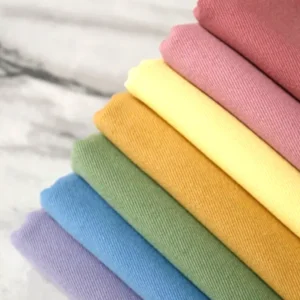 100 Cotton Solid Fabric
100 Cotton Solid Fabric -
 100% Cotton 10 Meters Printed Fabric Bolt
100% Cotton 10 Meters Printed Fabric Bolt -
 100% Cotton Printed Quilt Fabric Bolt
100% Cotton Printed Quilt Fabric Bolt -
 100% Cotton 40 Pieces 5″ Printed Green Charm Pack Quilt Fabric
100% Cotton 40 Pieces 5″ Printed Green Charm Pack Quilt Fabric -
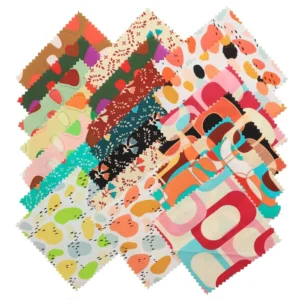 100% Cotton Quilted Fabric 42 Pieces 5″ Printed Charms Pack
100% Cotton Quilted Fabric 42 Pieces 5″ Printed Charms Pack -
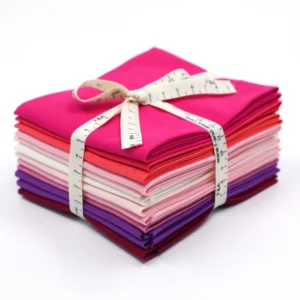 100% Cotton DIY Home Crafrts Fat Quarters
100% Cotton DIY Home Crafrts Fat Quarters -
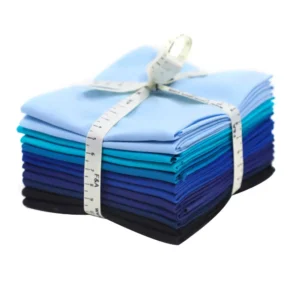 100% Cotton Blue Solid Color Fat Quarter
100% Cotton Blue Solid Color Fat Quarter -
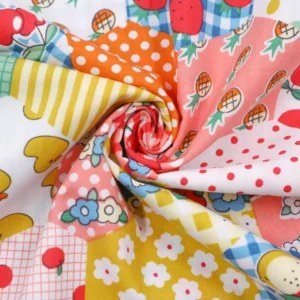 100% Cotton Poplin Printed Patchwork Fabrics
100% Cotton Poplin Printed Patchwork Fabrics
Understanding the vast array of fabric materials is fundamental for anyone involved in textiles, from fashion designers to home decorators. Each fabric type boasts unique characteristics, influencing its suitability for diverse applications.
This guide delves into 35 distinct fabric materials, exploring their origins, properties, and common uses. By grasping the nuances of each material, you can make informed choices, ensuring optimal results for your projects.
1. Crêpe Fabric
Crêpe is a fabric with a distinctive wrinkled appearance, made from silk, wool, or synthetic fibers. It’s typically light-to-medium weight and used for clothing like dresses, suits, and blouses, as well as home decor items like curtains and pillows. Crêpe offers a unique texture and drape, making it suitable for both formal and casual wear.
Crêpe’s textured surface provides a unique aesthetic, adding depth and interest to garments and home textiles. Its ability to drape well makes it suitable for flowing dresses and elegant suits. The fabric’s versatility allows for a wide range of design possibilities.
2. Merino Wool Fabric
Merino wool is a type of wool gathered from the coats of Merino sheep. T While traditional wool is notorious for being itchy, merino wool is one of the softest forms of wool and doesn’t aggravate the skin. This is because of the small diameter of the fine merino fibers, which makes it more flexible and pliable and therefore less itchy. Merino wool is considered a luxurious fiber and is used frequently for socks and outdoor clothing. Merino wool is known for being odor-resistant, moisture-wicking, and breathable.1
Merino wool’s natural softness and breathability make it ideal for clothing worn close to the skin. Its ability to absorb moisture and release it quickly provides comfort in various climates. The fabric’s versatility allows for a wide range of applications, from casual wear to outdoor gear.
3. Chenille Fabric
Chenille refers to both the yarn and fabric characterized by its soft, fuzzy texture, resembling a caterpillar. The yarn is purposefully piled during production, creating a unique, plush feel. Chenille fabric can be woven from various fibers, including cotton, silk, wool, and rayon, offering versatility in texture and drape. It’s popular for home decor and apparel.
Chenille’s soft, velvety texture makes it ideal for cozy items like blankets, throws, and sweaters. Its ability to hold dyes well allows for vibrant colors and intricate patterns. The fabric’s unique pile creates a shimmering effect, adding depth and visual interest to textiles.
4. Leather Fabric
Leather is a fabric made from animal hides or skins, with cowhide being the most common. Different leathers result from various animals and treatment techniques. Leather is durable, wrinkle-resistant, and can have diverse looks and feels. It’s used for apparel, accessories, and upholstery. Its robust nature makes it a long-lasting material.
Leather’s durability and versatility make it suitable for a wide range of applications, from rugged outerwear to luxurious accessories. Its ability to age gracefully adds character and value to products. The fabric’s natural texture and unique properties make it a timeless choice.
5. Georgette Fabric
Georgette is a type of crêpe fabric, typically made from silk or synthetic fibers like rayon, viscose, and polyester. It’s woven using tightly twisted yarns, creating a crinkled surface and a matte finish. Georgette is sheer and lightweight, similar to chiffon but less transparent due to its tighter weave. It’s often used for printed floral garments.
Georgette’s lightweight and flowing nature make it ideal for creating elegant and airy garments. Its crinkled texture adds a unique touch, enhancing the fabric’s drape and visual appeal. The fabric’s versatility allows for a wide range of designs, from formal wear to casual blouses.
6. Modal Fabric
Modal fabric is a semi-synthetic fabric made from beech tree pulp that is used primarily for clothing, such as underwear and pajamas, and household items, like bed sheets and towels. Modal is2 a form of rayon, another plant-based textile, though it is slightly more durable and flexible than3 rayon. Modal is often blended with other fibers like cotton and spandex for added strength. Modal is considered a luxurious textile thanks to both its soft feel and high cost, as it is more expensive than4 either cotton or viscose.
Modal’s natural softness and breathability make it ideal for clothing worn close to the skin. Its ability to absorb moisture and release it quickly provides comfort in various climates. The fabric’s versatility allows for a wide range of applications, from casual wear to household textiles.
7. Canvas Fabric
Canvas is a plain-weave fabric typically made from heavy cotton or linen yarn, known for its durability and sturdiness. It’s ideal for heavy-duty applications like bags, tents, and art canvases. By blending cotton with synthetic fibers, canvas can become water-resistant or waterproof, making it excellent for outdoor use. Its robust nature and versatility make it a staple in both industrial and artistic settings.
Canvas is highly valued for its ability to withstand wear and tear, making it a reliable choice for long-lasting products. Its adaptability to various treatments, such as waterproofing and flame retardancy, further enhances its utility. The fabric’s natural texture and strength make it suitable for a wide range of projects, from rugged outdoor gear to durable home decor items.
8. Lace Fabric
Lace is a delicate fabric with open-weave designs and patterns created from yarn or thread. Originally made from silk and linen, it now also uses cotton thread and synthetic fibers. Lace is used to accent and embellish clothing and home decor, considered a luxury textile due to its intricate craftsmanship. Its delicate nature adds a touch of elegance.
Lace’s intricate patterns and delicate appearance make it ideal for adding a touch of sophistication to garments and accessories. Its versatility allows for various designs, from delicate trims to elaborate overlays. The fabric’s handcrafted quality adds value and uniqueness to textiles.
9. Gingham Fabric
Gingham is a cotton or cotton blend fabric with a checked pattern created by weaving dyed yarn in a plain weave. It’s typically a two-color pattern, often red and white or blue and white, and is reversible. Gingham is popular due to its low cost and ease of production, used for shirts, dresses, and tablecloths. Its classic pattern makes it a staple in various applications.
Gingham’s simple yet versatile pattern makes it suitable for a wide range of uses, from casual clothing to home decor. Its affordability and ease of care make it a practical choice for everyday items. The fabric’s reversible nature provides added versatility in design.
10. Chiffon Fabric
Chiffon is a lightweight, plain-woven fabric with a slight shine and a slightly rough texture due to small puckers. These puckers are created using s-twist and z-twist crepe yarns, which are tightly twisted and woven in a plain weave. Chiffon can be made from various fibers, including silk, nylon, rayon, or polyester, offering different levels of sheerness and drape. It’s often used in formal wear.
Chiffon’s sheer and delicate nature makes it ideal for layering and creating flowing garments. Its lightweight quality provides a graceful drape, perfect for evening wear and bridal gowns. The fabric’s subtle shine adds a touch of elegance, making it a popular choice for special occasions.
11. Cotton Fabric
Cotton is a staple fiber derived from cotton plants, primarily composed of cellulose. It’s soft, fluffy, and versatile, spun into yarn and woven into durable fabrics used for everyday garments and home items. Cotton is known for its breathability and comfort, making it a popular choice for t-shirts, bed sheets, and towels. It’s available in prints and solids.
Cotton’s natural softness and breathability make it ideal for clothing worn close to the skin. Its ability to absorb moisture and release it quickly provides comfort in various climates. The fabric’s versatility allows for a wide range of applications, from casual wear to household textiles.
12. Damask Fabric
Damask is a reversible, jacquard-patterned fabric with designs woven into the fabric rather than printed. It’s created using a combination of satin and plain, twill, or sateen weaves, resulting in multi-colored or single-colored patterns. Damasks can be made from various fibers, including silk, linen, cotton, wool, or synthetic fibers like rayon. It’s often used in upholstery and formal wear.
Damask’s intricate woven patterns add a touch of elegance and sophistication to textiles. Its reversible nature provides versatility in design, allowing for different looks with the same fabric. The fabric’s durability and luxurious appearance make it a popular choice for high-end applications.
13. Cashmere Fabric
Cashmere is a luxurious wool fabric derived from cashmere and pashmina goats, known for its exceptional softness and insulation. The fibers are fine and delicate, resembling silk to the touch, and provide superior warmth compared to sheep’s wool. Often blended with merino wool, cashmere gains added weight while maintaining its soft feel. It’s a premium material used in high-end apparel.
Cashmere’s lightweight yet warm properties make it ideal for garments designed for comfort and elegance. Its natural insulation and soft texture provide a luxurious feel, making it a sought-after material for sweaters, scarves, and blankets. The delicate nature of cashmere requires gentle care to maintain its quality and longevity.
14. Burlap Fabric
Burlap is a coarse, woven fabric made from jute or sisal fibers. It’s known for its rustic texture and durability, often used for sacks, bags, and rustic decorations. Burlap is biodegradable and environmentally friendly.
Burlap’s natural, rough texture makes it ideal for creating rustic and earthy designs. Its strength and durability make it suitable for heavy-duty applications. The fabric’s low cost and environmental benefits contribute to its popularity in various crafts and industrial uses.
15. Linen Fabric
Linen is a strong, lightweight fabric made from the flax plant. It’s commonly used for towels, tablecloths, and bed sheets, known for its absorbency and breathability. It’s ideal for summer clothing, allowing air to pass through and regulate body temperature. Its natural texture and durability make it a popular choice.
Linen’s natural breathability and moisture-wicking properties make it ideal for warm-weather clothing and household textiles. Its strength and longevity make it a durable choice for everyday use. The fabric’s natural texture and elegant drape add a touch of sophistication to products.
16. Muslin Fabric
Muslin is a loosely-woven cotton fabric, made using a plain weave. It’s known as the material used in fashion prototypes to test patterns before cutting and stitching the final product. Muslin is ideal for testing patterns,1 as it’s lightweight, gauzy, and easy to sew.
Muslin’s lightweight and inexpensive nature make it perfect for creating mock-ups and testing designs. Its simple weave and natural fibers allow for easy manipulation and adjustments. The fabric’s versatility extends to other applications like cheesecloth and crafting.
17. Organza Fabric
Organza is a lightweight, sheer, plain-woven fabric originally made from silk, but now also from synthetic fibers like polyester and nylon. It’s characterized by small holes throughout the fabric, creating a delicate and shimmery appearance. Organza is popular for wedding gowns and evening wear.
Organza’s ethereal quality and subtle shine make it ideal for creating elegant and romantic garments. Its sheer nature allows for layering and creating volume without adding weight. The fabric’s delicate structure requires careful handling and sewing.
18. Polyester Fabric
Polyester is a man-made synthetic fiber created from petrochemicals. It’s characterized by its durable nature, but it’s not breathable and doesn’t absorb liquids well. Polyester blends are popular for adding strength to other fabrics while improving breathability.
Polyester’s resilience and low cost make it a staple in various applications, from apparel to home furnishings. Its ability to retain shape and resist wrinkles makes it ideal for travel clothing and everyday wear. The fabric’s versatility allows for a wide range of textures and finishes.
19. Satin Fabric
Satin is one of the three major textile weaves, creating an elastic, shiny, soft fabric with a beautiful drape. It has a soft, lustrous surface on one side and a duller surface on the other, a result of the satin weaving technique. Satin fabric is used for formal attire and accessories.
Satin’s smooth, glossy surface and flowing drape make it ideal for creating luxurious garments and accessories. Its ability to reflect light adds a touch of glamour to designs. The fabric’s versatility allows for various weights and finishes, catering to different needs.
20. Silk Fabric
Silk is a natural fiber produced by the silk worm, known for its shine and softness. It’s incredibly durable and strong, with a beautiful drape and sheen. Silk is used for formal attire, accessories, bedding, and upholstery. Its luxurious feel and elegant appearance make it a highly prized material.
Silk’s natural luster and smooth texture make it ideal for creating high-end garments and accessories. Its strength and durability, despite its delicate appearance, make it a valuable material. The fabric’s versatility allows for various weights and weaves, catering to different applications.
21. Spandex Fabric
Spandex, also known as Lycra or elastane, is a synthetic fiber characterized by its extreme elasticity. It’s blended with various fibers to add stretch and is used for everything from jeans to athleisure to hosiery. Its ability to provide flexibility and comfort makes it essential in modern apparel.
Spandex’s exceptional stretch and recovery properties make it ideal for form-fitting garments and activewear. Its ability to blend seamlessly with other fibers enhances comfort and performance. The fabric’s versatility allows for a wide range of applications, from sportswear to intimate apparel.
22. Suede Fabric
Suede is a type of leather made from the underside of animal skin, giving it a soft surface. It’s usually made from lambskin but also from goats, pigs, calves, and deer. Suede is softer and thinner than traditional leather but still durable and pliable. It’s used for footwear, jackets, and accessories.
Suede’s soft, velvety texture and supple nature make it ideal for creating comfortable and stylish garments and accessories. Its ability to be easily molded and crafted allows for intricate designs. The fabric’s unique appearance and feel add a touch of luxury to products.
23. Taffeta Fabric
Taffeta is a crisp, plain-woven fabric made most often from silk, but also from polyester, nylon, acetate, or other synthetic fibers. It typically has a lustrous, shiny appearance and can vary in weight and sheerness. Taffeta is popular for lining and evening wear.
Taffeta’s crisp texture and shiny surface make it ideal for creating structured garments and linings. Its ability to hold shape and create volume makes it suitable for formal wear and costumes. The fabric’s versatility allows for various weights and finishes, catering to different design needs.
24. Toile Fabric
Toile de Jouy, or simply toile, was originally a linen printed with romantic, pastoral patterns in a single color. The word toile has evolved to refer to the design aesthetic, popular in France in the 1700s. Toile designs are used for clothing, upholstery, window treatments, and bedding.
Toile’s classic patterns and historical charm make it ideal for creating traditional and elegant textiles. Its ability to evoke a sense of nostalgia adds character to designs. The fabric’s versatility allows for various applications, from home decor to fashion.
25. Tweed Fabric
Tweed is a rough woven fabric usually made from wool, woven using plain or twill weaves. It’s extremely warm, hard-wearing, thick, and stiff. Wool tweed is often woven with different colored threads to achieve dynamic patterns. Tweed is popular for suiting and jackets.
Tweed’s rugged texture and warm properties make it ideal for creating durable and stylish outerwear. Its ability to withstand harsh weather conditions makes it suitable for outdoor apparel and accessories. The fabric’s unique patterns and colors add a touch of rustic charm to designs.
26. Twill Fabric
Twill is one of the three major textile weaves, characterized by a diagonal rib pattern. It has a distinct front side (wale) and a lighter back. Twill has a high thread count, making it opaque, thick, and durable. It’s used for denim, chinos, upholstery, and bed linens.
Twill’s durable weave and distinct texture make it ideal for creating sturdy and long-lasting textiles. Its ability to drape well makes it suitable for various applications, from workwear to home decor. The fabric’s versatility allows for various weights and finishes, catering to different needs.
27. Velvet Fabric
Velvet is a soft, luxurious fabric characterized by a dense pile of evenly cut fibers, creating a smooth nap. It has a beautiful drape and a unique soft and shiny appearance. Velvet is popular for evening wear, dresses, upholstery, and home decor.
Velvet’s plush texture and rich appearance make it ideal for creating elegant and luxurious textiles. Its ability to reflect light adds depth and dimension to designs. The fabric’s versatility allows for various weights and fibers, catering to different applications.
28. Viscose Fabric
Viscose is a semi-synthetic rayon fabric made from wood pulp, used as a silk substitute. It has a similar drape and smooth feel to silk and is much cheaper to produce. Viscose is used for clothing items like blouses, dresses, and jackets, and for carpets and upholstery.
Viscose’s smooth texture and flowing drape make it ideal for creating comfortable and elegant garments. Its ability to mimic silk at a lower cost makes it a popular choice. The fabric’s versatility allows for various weights and finishes, catering to different needs.
29. Voile Fabric
Voile is a lightweight, semi-sheer fabric typically made from cotton or blends like cotton-polyester. It has a high thread count, resulting in a smooth, soft texture with a delicate drape. Voile is often used for sheer curtains, lightweight summer clothing, and overlays. Its airy quality makes it ideal for creating soft, flowing designs.
Voile’s light and airy nature makes it perfect for creating ethereal garments and delicate window treatments. Its ability to diffuse light softly adds a romantic touch to interiors. The fabric’s fine weave ensures a smooth surface, enhancing its elegance and drape.
30. Wool Fabric
Wool is a natural fiber derived from the fleece of sheep, known for its warmth, durability, and resilience. It’s used for a wide range of products, including clothing, blankets, and upholstery. Wool has natural crimp, which traps air, providing excellent insulation. It’s also naturally moisture-wicking and flame-resistant.
Wool’s natural insulating properties make it ideal for cold-weather clothing and blankets. Its durability and resilience make it suitable for upholstery and carpets. The fabric’s ability to absorb moisture without feeling damp enhances comfort in various climates.
31. Brocade Fabric
Brocade is a richly decorative shuttle-woven fabric, often made of silk, with raised patterns that are typically gold or silver threads. It’s characterized by its intricate designs and luxurious appearance, often used for formal wear, upholstery, and drapery. Brocade’s elaborate patterns are created by weaving supplementary weft yarns.
Brocade’s opulent look and feel make it ideal for high-end textiles and decorative items. Its sturdy structure and detailed designs add a touch of grandeur to interiors and garments. The fabric’s complexity and rich textures make it a popular choice for special occasions.
32. Flannel Fabric
Flannel is a soft, woven fabric, typically made from cotton or wool, characterized by its brushed surface. This brushing creates a raised nap, resulting in a fuzzy texture that provides warmth and comfort. Flannel is commonly used for shirts, pajamas, and bedding. Its cozy feel makes it a favorite for cold-weather apparel.
Flannel’s soft, warm texture makes it perfect for creating comfortable and casual clothing. Its ability to trap air provides excellent insulation, making it ideal for winter apparel. The fabric’s versatility allows for various patterns and colors, catering to diverse styles.
33. Jacquard Fabric
Jacquard refers to any fabric woven on a jacquard loom, which allows for intricate patterns to be woven directly into the fabric. It can be made from various fibers, including cotton, silk, and synthetic blends. Jacquard fabrics are known for their complex designs and durability, often used for upholstery, drapery, and formal wear.
Jacquard’s elaborate woven patterns make it ideal for creating luxurious and durable textiles. Its ability to incorporate complex designs without printing makes it a popular choice for high-end applications. The fabric’s versatility allows for various textures and weights, catering to different needs.
34. Terry Cloth Fabric
Terry cloth is a fabric with loops that cover both sides, creating a soft, absorbent texture. It’s typically made from cotton or cotton blends and is commonly used for towels, robes, and washcloths. Terry cloth’s looped structure increases its surface area, enhancing its absorbency.
Terry cloth’s high absorbency and soft texture make it perfect for creating comfortable and functional textiles. Its ability to retain moisture makes it ideal for bath and kitchen items. The fabric’s durability and easy care make it a practical choice for everyday use.
35. Velour Fabric
Velour is a knit fabric with a plush, velvety texture, similar to velvet but with a stretchier quality. It’s typically made from cotton or synthetic blends and is used for loungewear, sportswear, and upholstery. Velour’s soft, luxurious feel and comfortable stretch make it a popular choice.
Velour’s soft, plush texture and comfortable stretch make it ideal for creating cozy and stylish garments. Its ability to drape well and retain its shape makes it suitable for various applications. The fabric’s versatility allows for various weights and finishes, catering to different design preferences.
How to Identify Fabric Material
Identifying fabric materials accurately is crucial for various applications, from tailoring to textile conservation. Understanding the characteristics of different fibers and weaves enables you to select the right materials for specific projects and maintain their quality over time.
1. Visual Inspection
Begin by closely examining the fabric’s surface. Look for distinct textures, weaves, and patterns. Natural fibers like cotton and linen often have a matte finish and visible weave patterns, while synthetic fibers like polyester and nylon tend to have a smoother, shinier appearance. Silk, with its natural sheen and drape, can be identified by its lustrous surface. Observe the fabric’s drape and how it falls; natural fibers often drape more naturally than stiff synthetics.
Note the fabric’s thickness and weight. Heavier fabrics like canvas or denim have a dense, robust feel, while lightweight fabrics like chiffon or voile are sheer and delicate. Check for any visible fibers or yarns that might indicate the material’s composition. For instance, wool fabrics may exhibit a crimped or fuzzy texture, while cotton fabrics often have a smooth, consistent weave.
2. Burn Test
Conduct a burn test in a safe, controlled environment. Natural fibers like cotton and linen will burn with a paper-like flame, leaving a fine, powdery ash. Wool and silk will burn slowly, emitting a smell of burning hair, and leave a brittle, bead-like residue. Synthetic fibers like polyester and nylon will melt and shrink, producing a chemical smell and forming a hard, plastic-like bead. Always perform this test on a small, inconspicuous area of the fabric.
Observe the flame’s color, the smoke’s odor, and the residue’s texture. Cotton and linen burn with a yellow flame and white smoke, while wool and silk produce a smoldering flame and dark smoke. Synthetic fibers often emit black smoke and a pungent odor. Document your findings carefully, as the burn test provides valuable clues about the fabric’s composition.
3. Touch and Feel
Evaluate the fabric’s texture and hand feel. Natural fibers like cotton and linen tend to feel cool and crisp to the touch, while wool and silk offer a warmer, softer sensation. Synthetic fibers like polyester and nylon often have a smooth, slippery feel. Assess the fabric’s flexibility and drape. Natural fibers tend to be more pliable and drape naturally, while synthetic fibers may feel stiffer and hold their shape.
Consider the fabric’s weight and thickness. Heavy fabrics like denim or canvas feel substantial, while lightweight fabrics like chiffon or voile are delicate and airy. Notice any unique textures, such as the fuzzy nap of flannel or the ribbed surface of corduroy. The hand feel provides valuable clues about the fabric’s composition and quality.
4. Microscopic Examination
Use a microscope to examine the fabric’s fibers closely. Natural fibers like cotton and linen have a distinctive cellular structure, while wool and silk exhibit a scaled or smooth surface. Synthetic fibers have a uniform, manufactured appearance. Observe the fiber’s cross-sectional shape and longitudinal structure. Cotton fibers appear twisted, wool fibers exhibit scales, and silk fibers are smooth and triangular.
Examine the weave pattern under magnification. Plain weaves have a simple interlacing pattern, while twill weaves exhibit diagonal ribs and satin weaves have a smooth, glossy surface. Microscopic examination provides detailed information about the fabric’s fiber composition and weave structure, aiding in accurate identification.
How to Choose the Best Fabric Material
Selecting the best fabric material for your project requires careful consideration of various factors, including the fabric’s properties, intended use, and aesthetic appeal. Understanding these elements ensures your chosen material meets both functional and design requirements.
1. Identify the Project Requirements
Begin by clearly defining the purpose of your project. Whether it’s clothing, home decor, or industrial use, each application has specific demands. For apparel, consider factors like comfort, drape, and durability. For upholstery, focus on strength, stain resistance, and longevity. Industrial applications may prioritize factors like weather resistance, fire retardancy, or chemical resistance.
Consider the environment where the fabric will be used. Outdoor projects require materials that withstand UV exposure, moisture, and temperature fluctuations. Indoor applications may focus on comfort, aesthetics, and ease of maintenance. Understanding the specific demands of your project ensures you select a fabric that performs optimally in its intended environment.
2. Evaluate Fabric Properties
Assess the fabric’s fiber content, weave, and finish. Natural fibers like cotton and linen offer breathability and comfort, while synthetic fibers like polyester and nylon provide durability and weather resistance. Blends combine the benefits of different fibers, offering tailored properties. Consider the fabric’s weight, texture, and drape, as these factors influence its suitability for different applications.
Evaluate the fabric’s performance characteristics. Properties like stretch, wrinkle resistance, and colorfastness are crucial for specific applications. For example, activewear requires stretchy, moisture-wicking fabrics, while formal wear benefits from wrinkle-resistant materials. Understanding these properties ensures the fabric meets the functional demands of your project.
3. Consider Aesthetic Preferences
Balance functional needs with desired aesthetic qualities. The fabric’s appearance, texture, and color play a significant role in the overall look and feel of your project. Consider the fabric’s drape, luster, and pattern, ensuring they align with your design vision. Natural fibers often offer a rustic, textured look, while synthetic fibers can provide a sleek, modern appearance.
Choose colors and patterns that complement your project’s design and environment. Consider the fabric’s ability to hold dye and maintain its color over time. For projects requiring precise color matching, request fabric samples or swatches to evaluate the color under different lighting conditions. The right aesthetic choices enhance the visual appeal and overall quality of your project.
4. Assess Maintenance and Care
Evaluate the fabric’s care requirements, considering factors like washability, shrinkage, and ironing needs. Fabrics requiring dry cleaning or special care may not be suitable for everyday items. Consider the fabric’s durability and resistance to pilling, fading, and wear, ensuring it maintains its appearance over time.
Choose fabrics that align with your lifestyle and maintenance capabilities. Easy-care fabrics like cotton blends or synthetics are ideal for busy individuals or high-traffic items. Understanding the fabric’s care instructions ensures it remains in good condition, extending its lifespan and maintaining its appearance.
Conclusion
Understanding fabric materials is essential for selecting the right textiles for any project. From natural fibers like cotton and linen to synthetics like polyester and nylon, each material offers unique properties. Choosing the appropriate fabric ensures optimal performance, durability, and aesthetic appeal, whether for apparel, home decor, or industrial applications.
This guide provides a comprehensive overview of various fabric materials and their uses, empowering you to make informed decisions. By understanding the characteristics of each fabric, you can ensure your projects achieve the desired results.
For premium fabric quality, customizable wholesale fabrics, contact Fanda Fabrics. We offer a wide range of options to meet your specific requirements. Get a quote today and experience the difference in quality and service.
